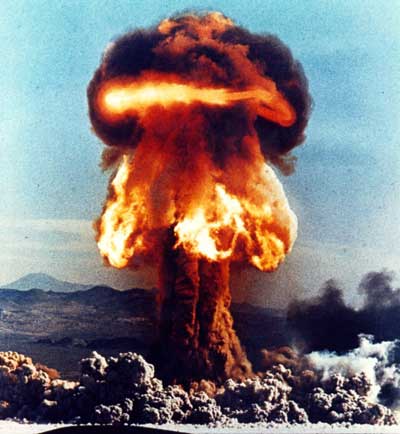
The CTBTO Science and Technology Conference
 Earlier this week the Preparatory Commission for the Comprehensive-Nuclear-Test-Ban Treaty Organization (CTBTO) kicked off its second annual two-week advanced science and technology conference in Vienna, Austria.
Earlier this week the Preparatory Commission for the Comprehensive-Nuclear-Test-Ban Treaty Organization (CTBTO) kicked off its second annual two-week advanced science and technology conference in Vienna, Austria.
The conference is a multi-disciplinary effort to bring together hundreds of scientists, experts, policy makers, and journalists from around the globe to spread knowledge about the broad range of the CTBTO’s verification regime.
The Comprehensive Test Ban Treaty is a zero-yield treaty that prohibits all forms of nuclear testing, in any environment, for any reason.
However, the CTBT is not in force. It has been signed and ratified by 157 states, with Indonesia’s ratification earlier this year being the most recent.
In order to enter into force, the CTBT must be ratified by the 44 Annex II states – the nations that participated in the CTBT negotiations from 1994-1996 and that possessed nuclear power reactors or research reactors at that time.
8 Annex II states have not yet ratified the Comprehensive Test Ban Treaty. The US is one of those countries, although it has observed a moratorium on nuclear tests since its last nuclear test in 1992.
The CTBTO conference highlights the broad range of verification measures the treaty has at its disposal to ensure detection of nuclear explosions.
The verification regime centers on four state-of-the-art technologies for nuclear explosion detection:
- Seismic: With 50 primary and 120 auxiliary seismic stations, the CTBTO can detect any belowground nuclear explosion.
- Infrasound: 60 surface stations monitor sound waves inaudible to the human ear that are emitted by large explosions.
- Hydroacoustic: 11 stations monitor frequencies in ocean waves caused by possible underwater nuclear explosions.
- Radionuclide: 80 stations detect atmospheric nuclides, essentially atoms that are radioactive. 40 of these also can detect radioactive noble gases such as xenon.
Data from these sensing apparatuses gets electronically transmitted to the International Data Center (IDC) in Vienna for analysis.
The CTBTO does not just have nuclear weapons-related implications. There is a broad application for science and research, especially in regard to natural, or even manmade disasters.
The data collected from natural events like the Fukushima nuclear disaster, or the Russian wildfires in the summer of 2010, demonstrate the numerous capabilities of the verification regime.
The Central Institute for Meteorology and Geodynamics (ZAMG) of Austria was the first organization to accurately publish source estimates of released radioactive particles from Fukushima. They used data from the CTBTO IDC.
The International Monitoring System (IMS) will eventually consist of over 330 facilities to monitor the planet for nuclear weapon detonations. None of the IMS stations were operational when the U.S. last voted on ratification of the CTBT. Today, the IMS is about 85 percent complete.
The CTBTO verification regime is robust and technologically savvy, making evasive testing very difficult.
Ratification of the CTBT would clearly enhance U.S. national security. As ASP CEO BGen Stephen Cheney recently wrote, “By ratifying the CTBT, at no consequence to our own nuclear capabilities, the United States further establishes an international norm that pressures Iran and North Korea to ratify the treaty as well. We no longer need to test, but these states do in order to bridge their knowledge gaps.”
After twenty years without nuclear testing, it’s time to take the next step by ratifying the CTBT.






[…] Fusion energy has the potential to play a large role in America’s energy security over the long-term. Check out these slides for a concise overview of fusion energy The CTBTO Science and Technology Conference […]